Author: Marshall Schott
I had this idea to try to wrangle my own wild yeast and ferment a beer with it. Not the most terribly novel idea, I know, but it sounded like a fun and mostly easy thing to do. I figured the worst that could happen was shitty beer, so after filling 2 carboys with Cream Ale wort, I put a couple pints worth in a sanitized (probably not necessary) plastic pitcher and placed it under a bush in my front yard for a couple hours. It was about 98°F that afternoon. After 4 hours under the bush, I transferred the hopefully inoculated wort (beer?) to a 2 liter flask.
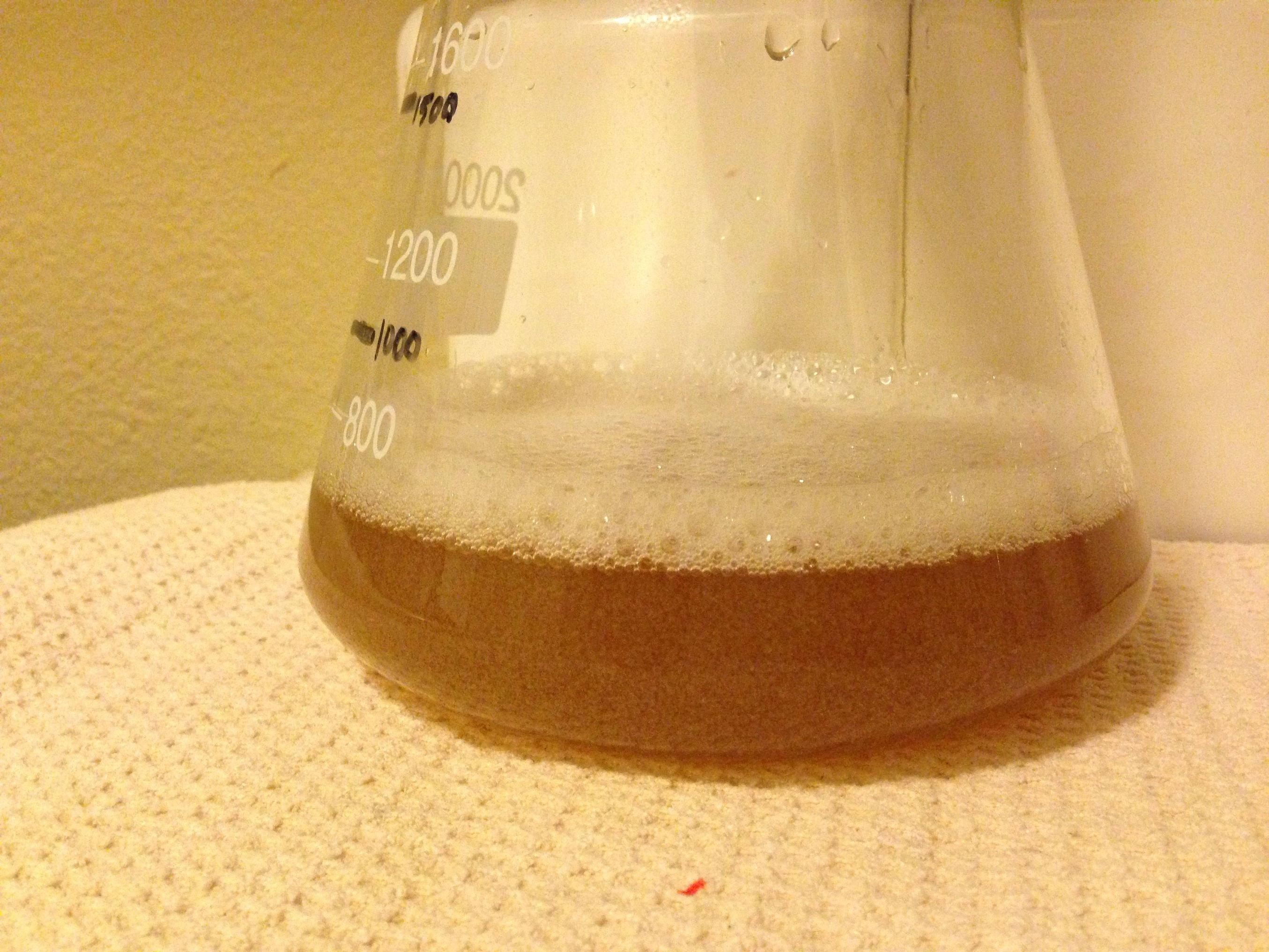
After 12 hours, things were looking about the same, not much action at all.
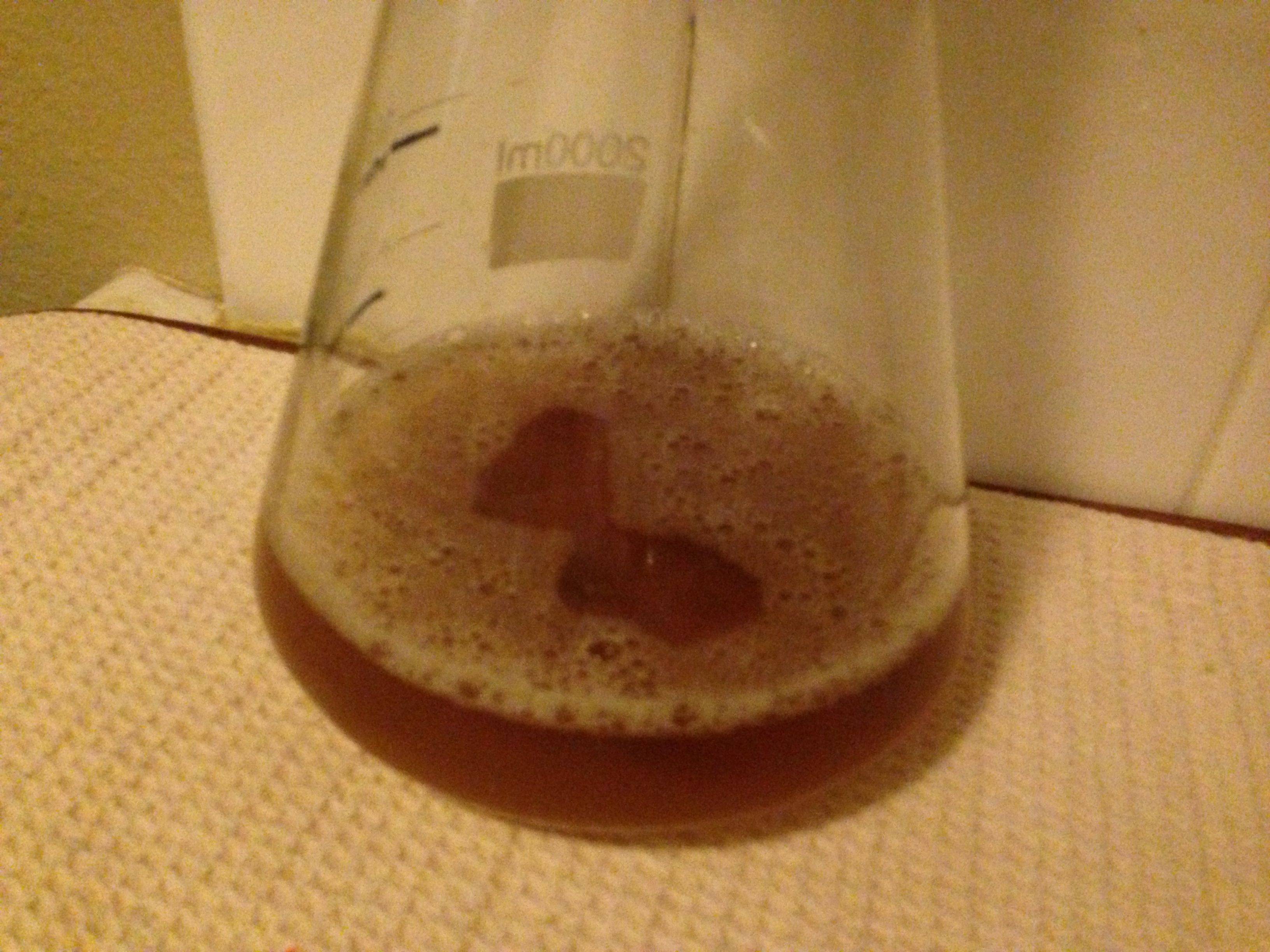
I went to work and returned about 12 hours later to discover what looked an awful lot like fermentation.
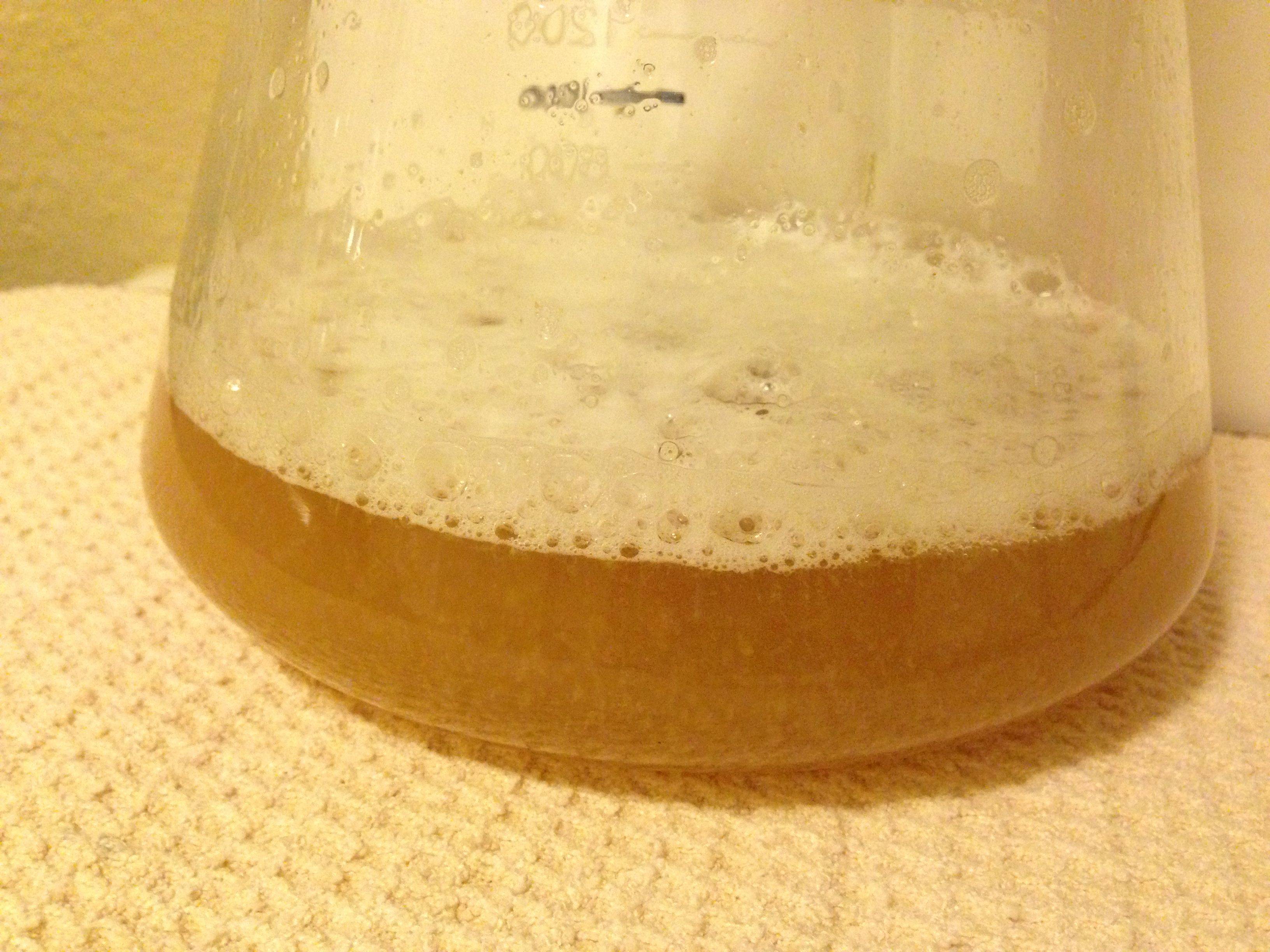
It chugged along all night and the following morning had what appeared to be a decent krausen.
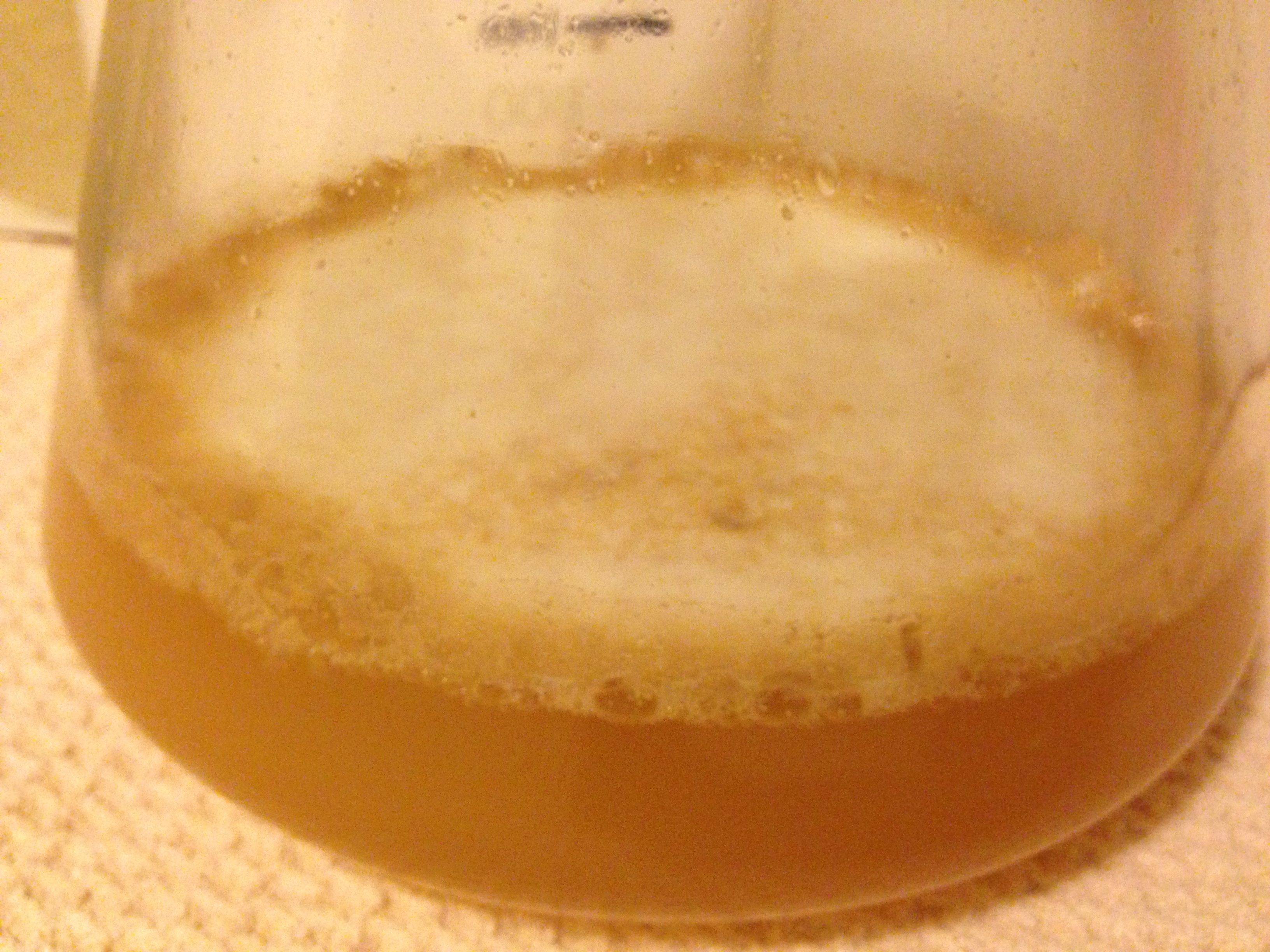
Things only started looking odd that evening, about 2 days after bringing the wort inside. Check out those bubbles.
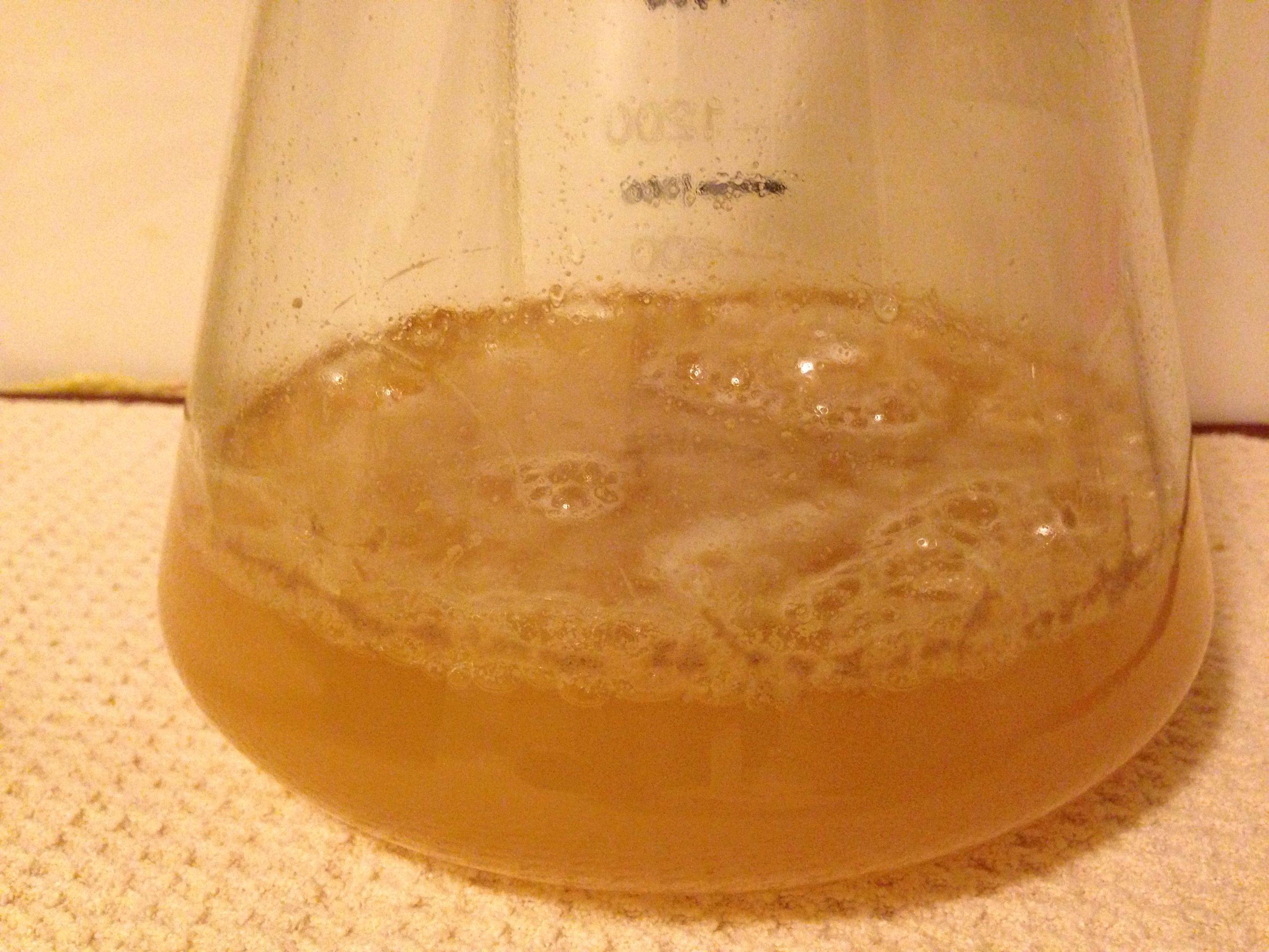
I was pretty certain I’d wake up to a lacto pellicle or even those bulbous brett bubbles, but nope, things just seemed to settle down.
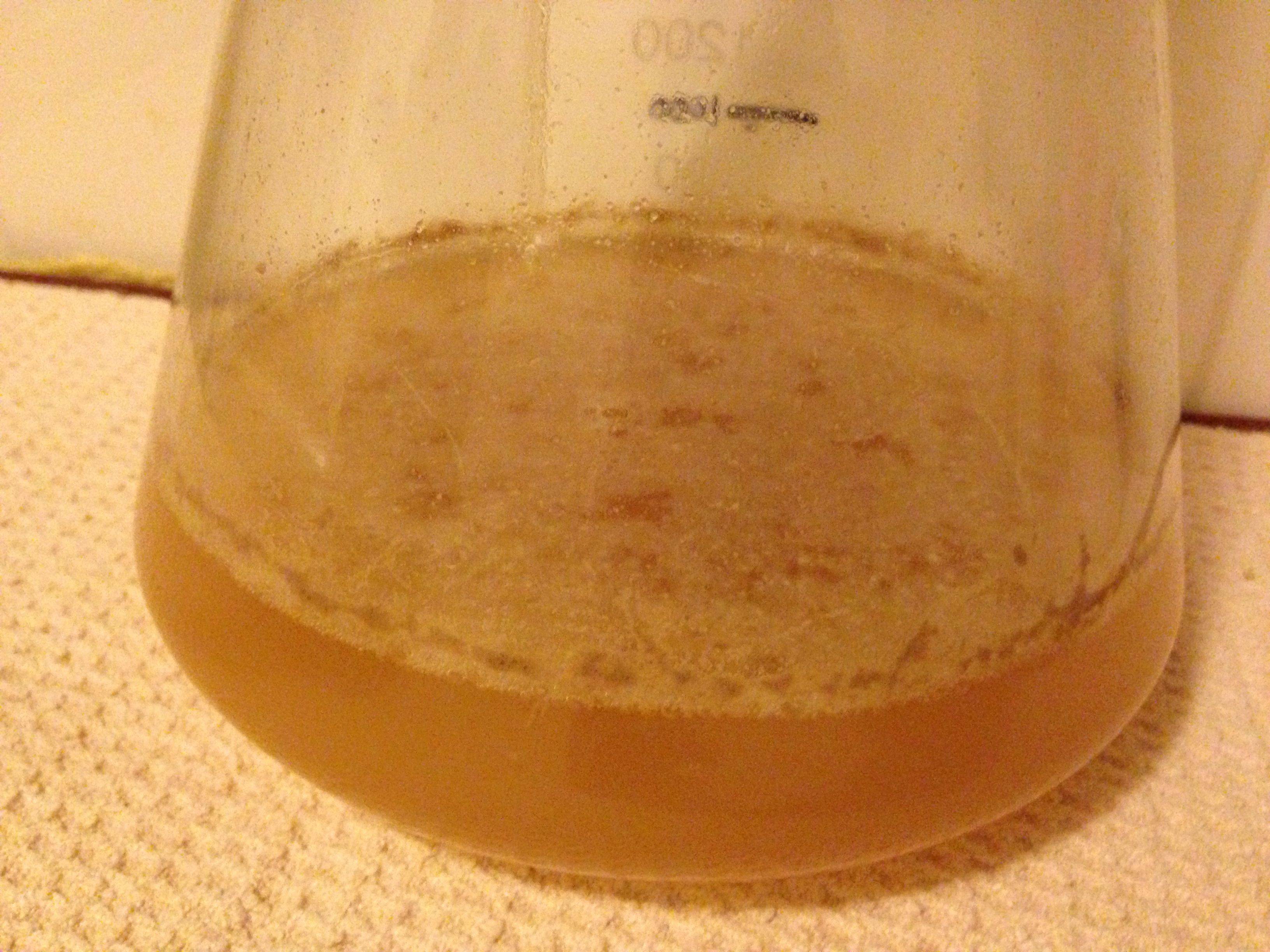
The stuff on the top just looked like debris from the kettle, which I reckon is because I pulled it from the little bit of wort left in there after racking off 10.5 gallons. I decided to take a SG reading.]
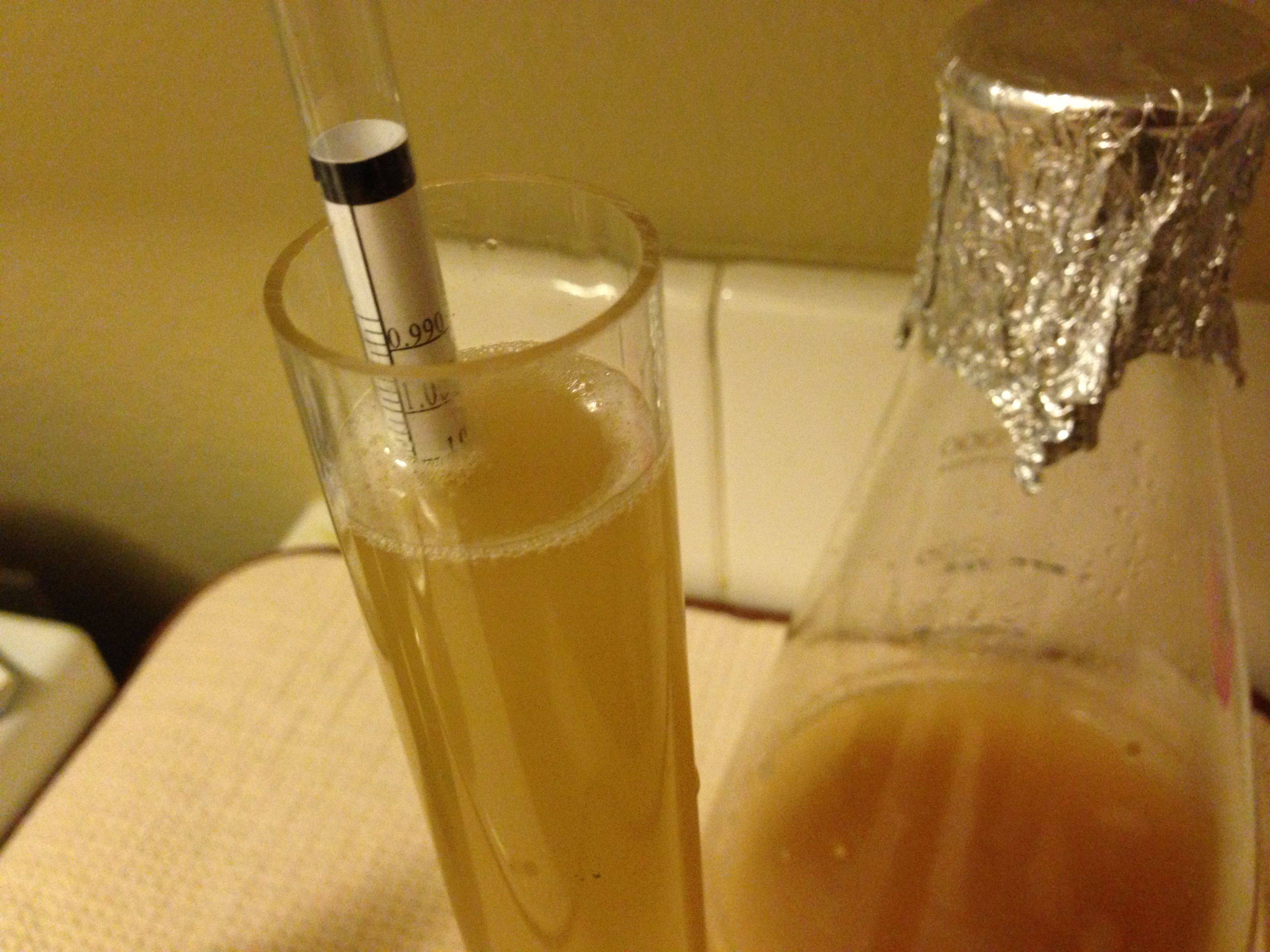
1.010 seemed pretty respectable given 1.052 was the OG of the Cream Ale. The taste was surprisingly unremarkable at this point– earthy, vegetal, slightly spicy. Not terribly unlike some poorly made Saisons I’ve tried. I let the stuff sit for another 3 days just to see if anything else might happen.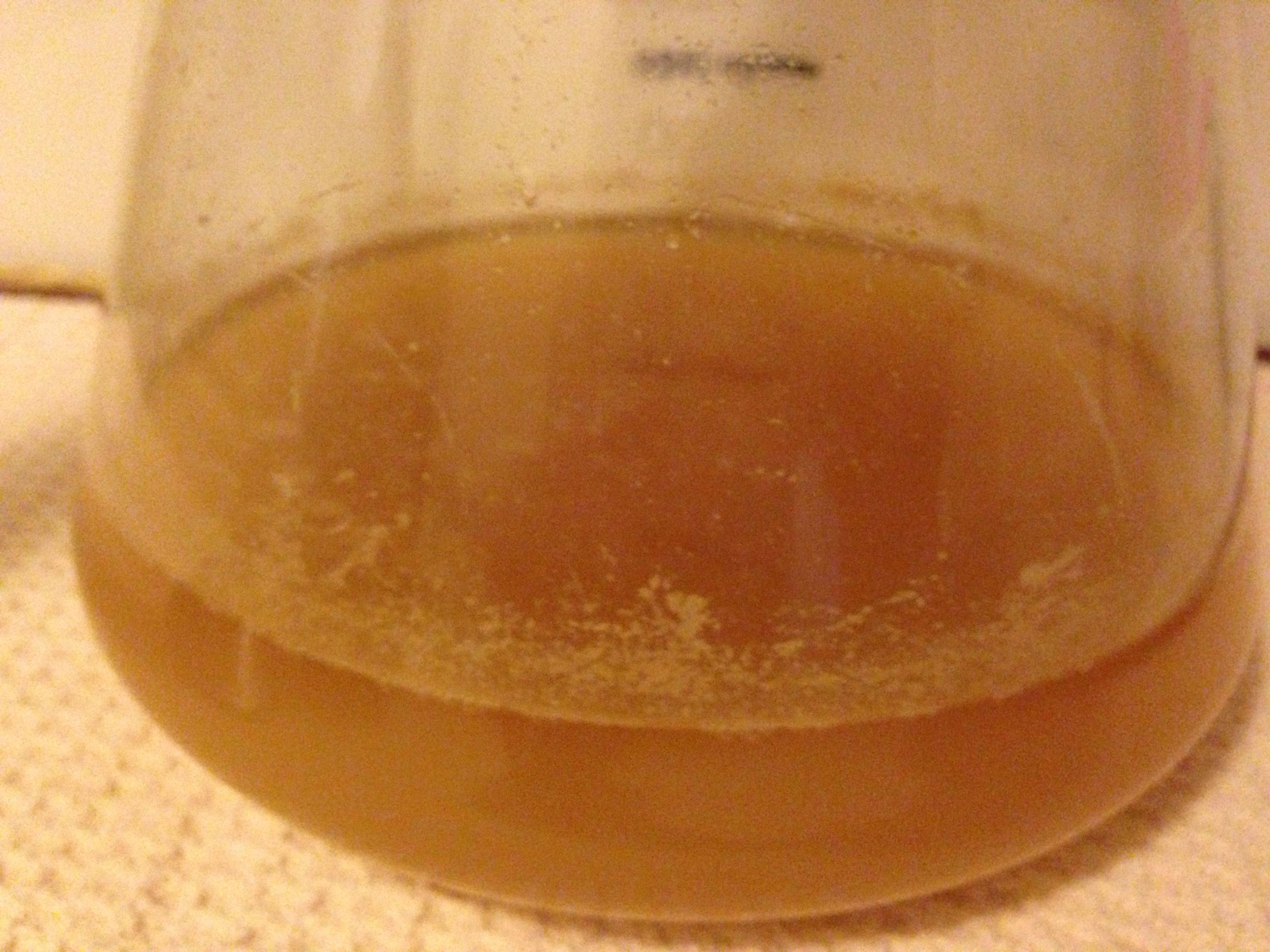
The only difference appeared to be the yeast and whatever else were settling out, so I cold crashed with plans to use it in a beer the following weekend.
Given the experimental nature of this beer, I didn’t really want to waste 5 gallons worth of ingredients on what could ultimately taste like carbonated sewage, so I designed a simple 1 gallon batch of ~1.050 OG wort using grains I had a lot of: 1.5 lbs German Pils and 4 oz C120 with a single dose of some older Fuggles for bittering. I thought this would be a fun batch to try a new BIAB technique.
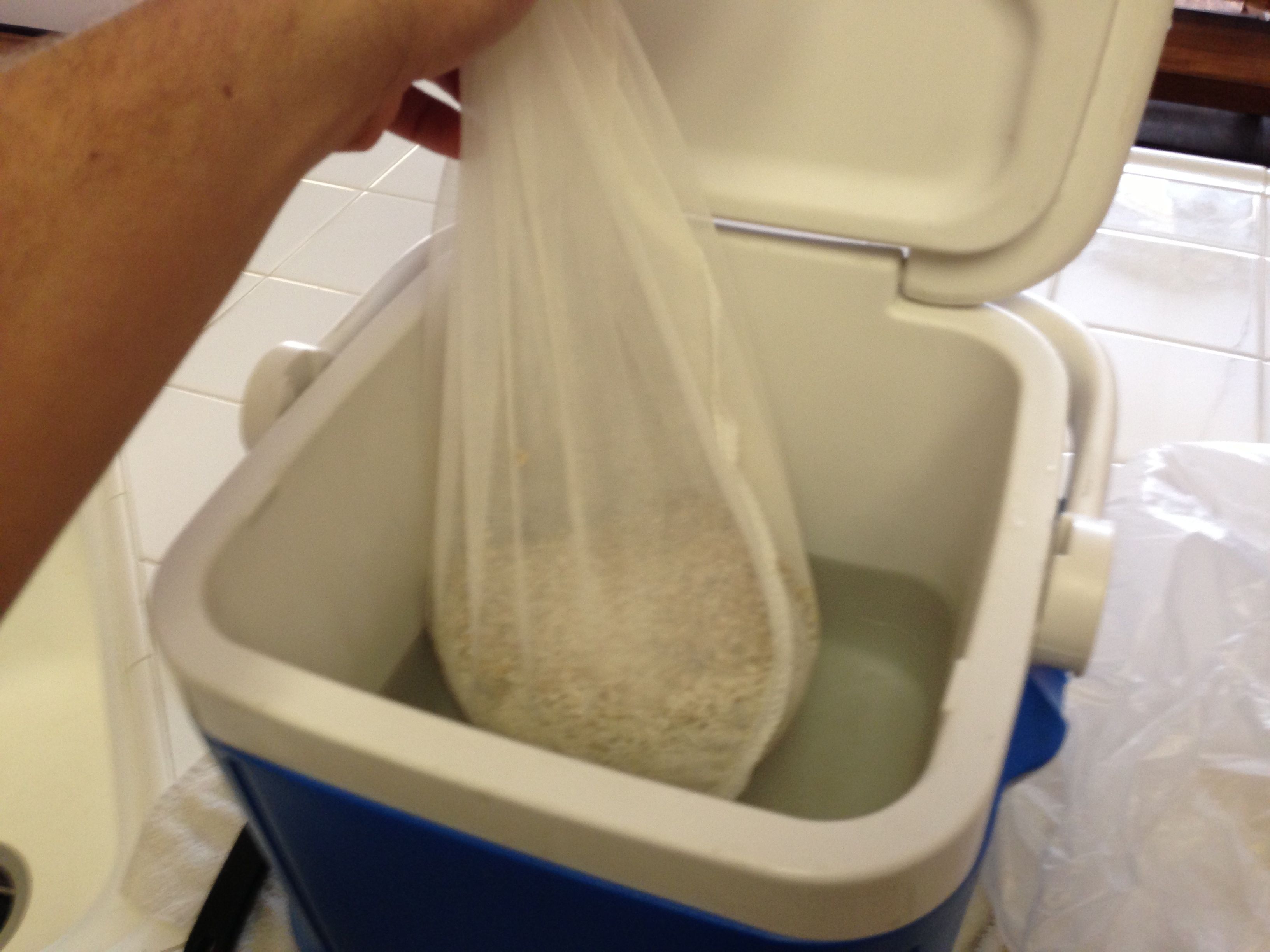
I actually mashed in an Igloo Ice Cube, as I was concerned about losing heat too fast in my kettle given the small mash volume. It worked great! Over an hour, I lost 2°F, going from 155° to 153°. Who says you can’t brew in small places?
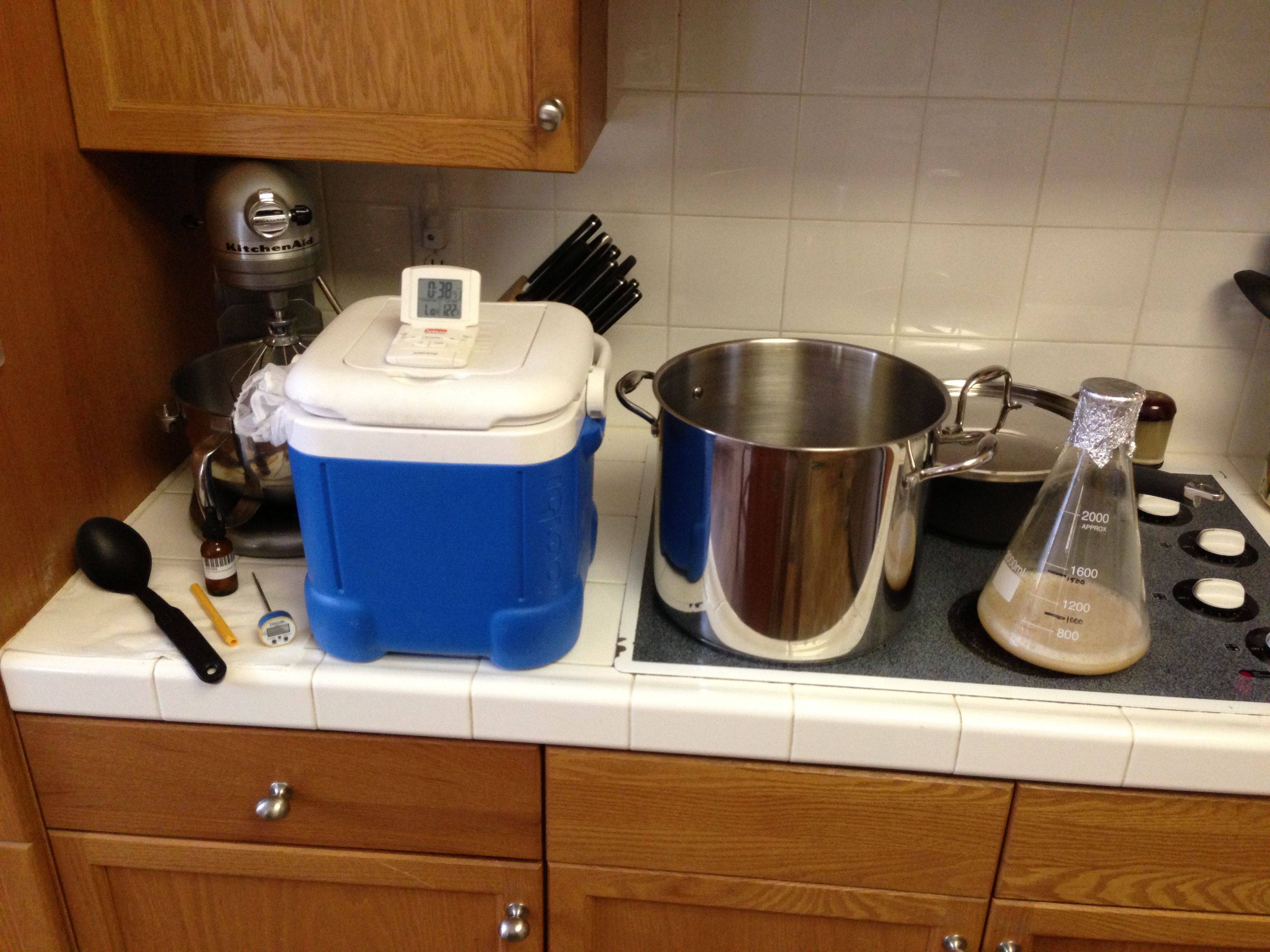
An hour later, the mash step was complete and the wort had a nice deep red hue to it.
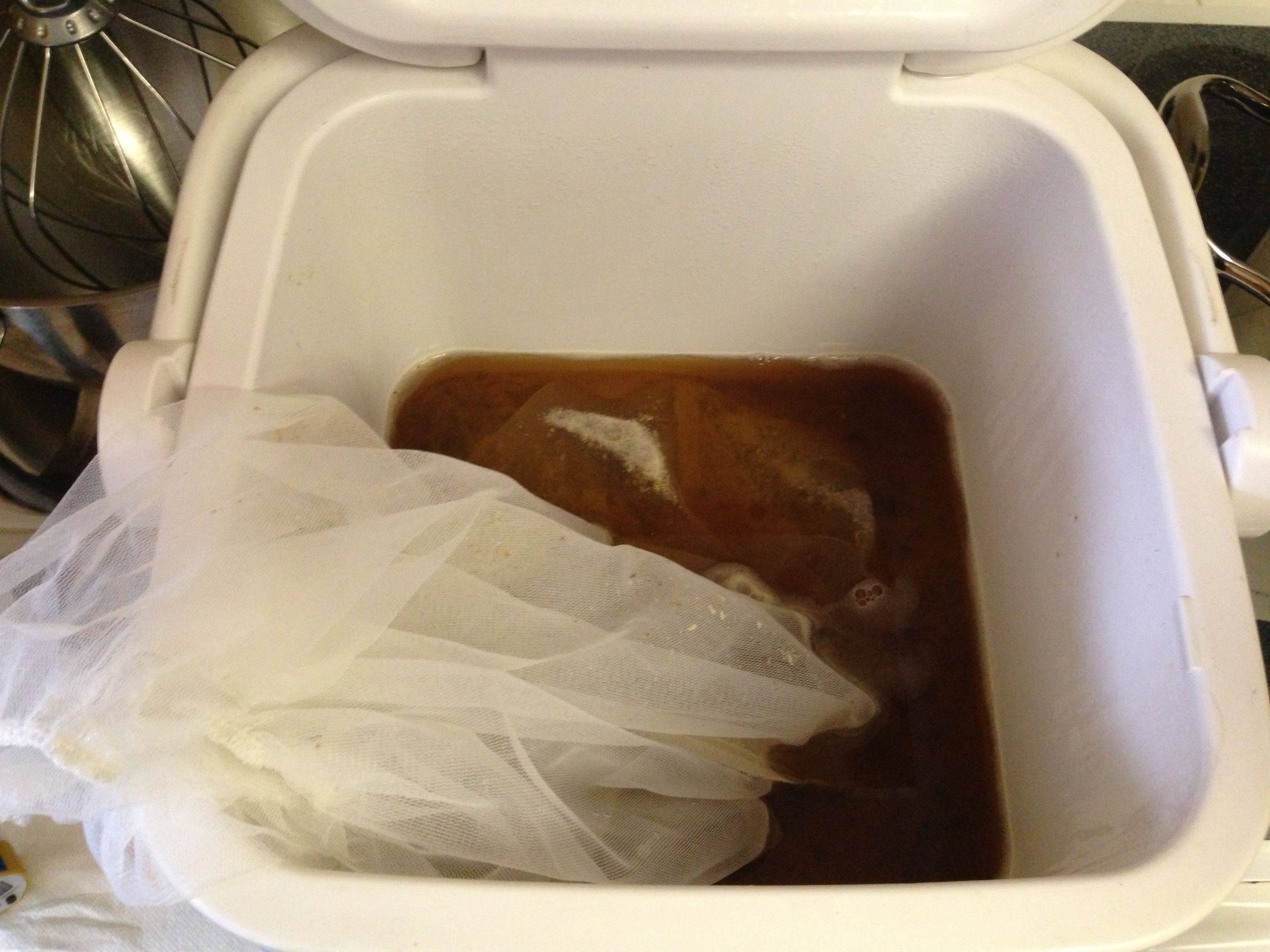
I then poured the wort into the kettle and brought it up to a boil.
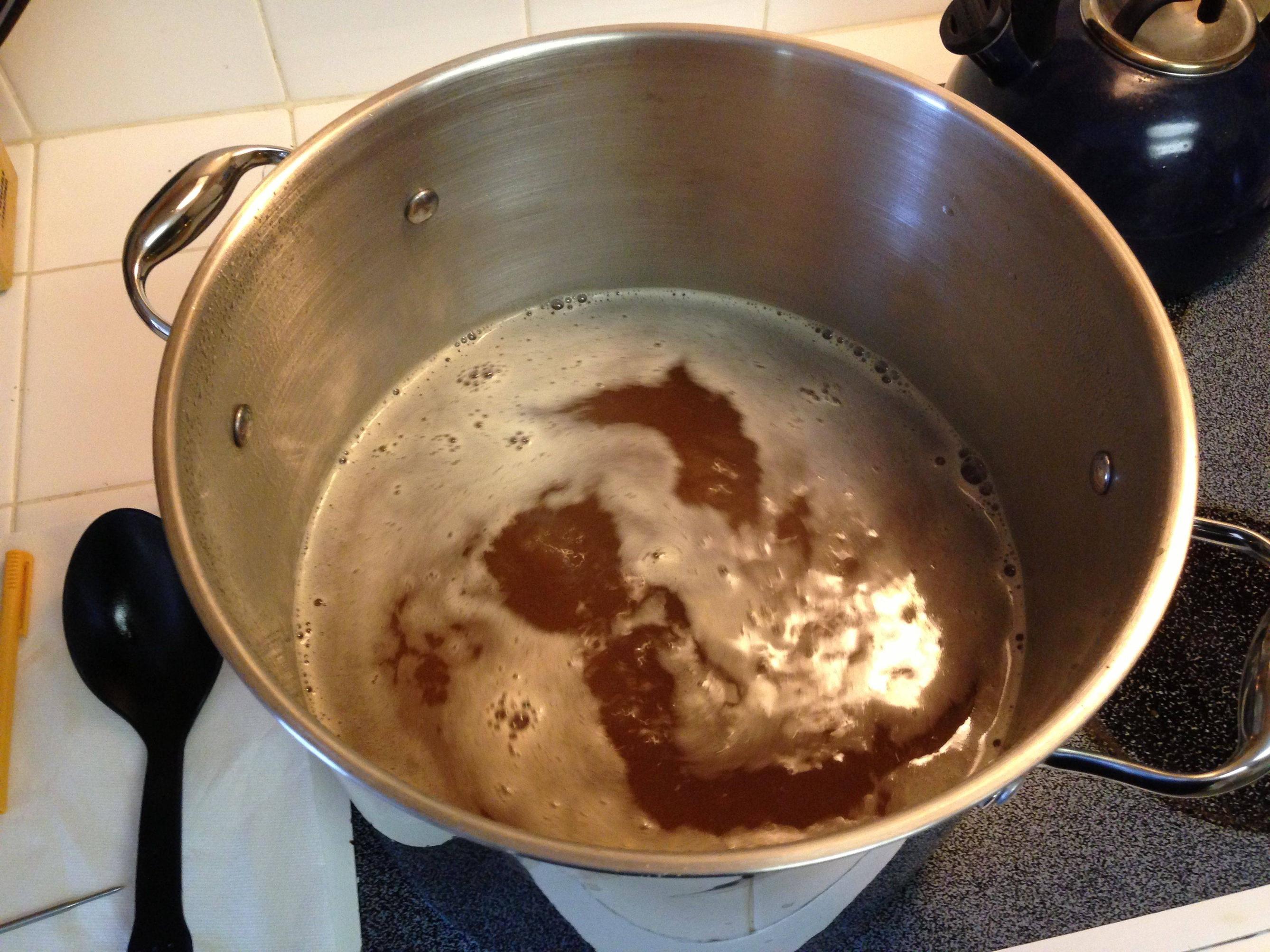
A single hop addition was made to add just a touch of bitterness, as I didn’t want anything getting in the way of the yeast. Once the 90 minute boil was complete, I chilled the wort to 70° in an ice bath, transferred it to a small fermentation bucket, pitched the harvested yeast stuff, and placed the fermentor in my ferm chamber controlled to 66°.

I was pleased to discover the airlock bubbling like normal within twelve hours. Fermentation, at least all observable signs of it, proceeded as normal and by day 5 things seemed to have settled down. As with the starter, I left the beer an additional 2 weeks just to see if anything formed. This is when I took a SG reading.
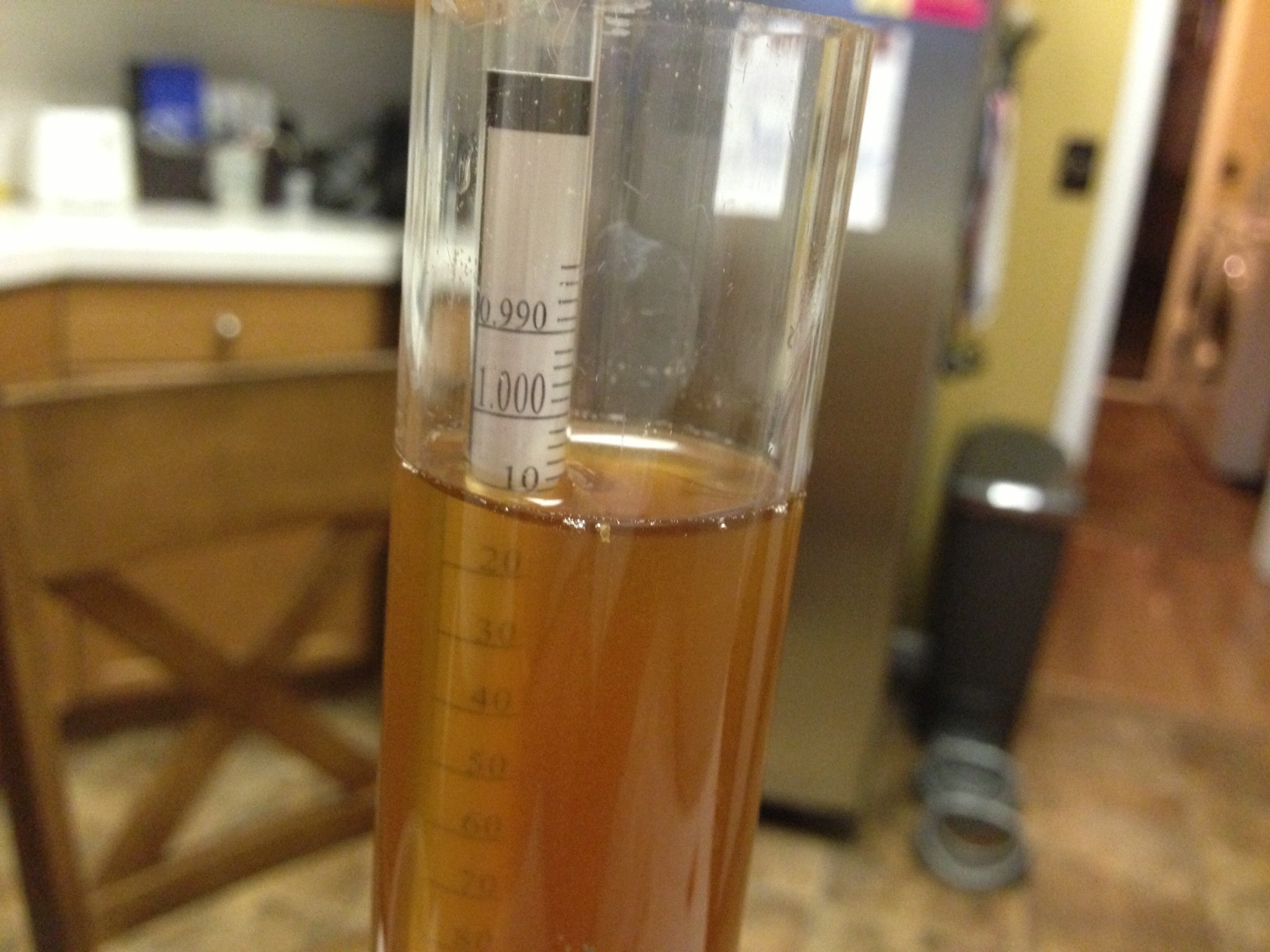
I found it interesting that this beer ended up at exactly the same FG as the starter wort, 1.010, which worked for me. After another week and one more hydrometer sample (same FG), I bottled this ale.
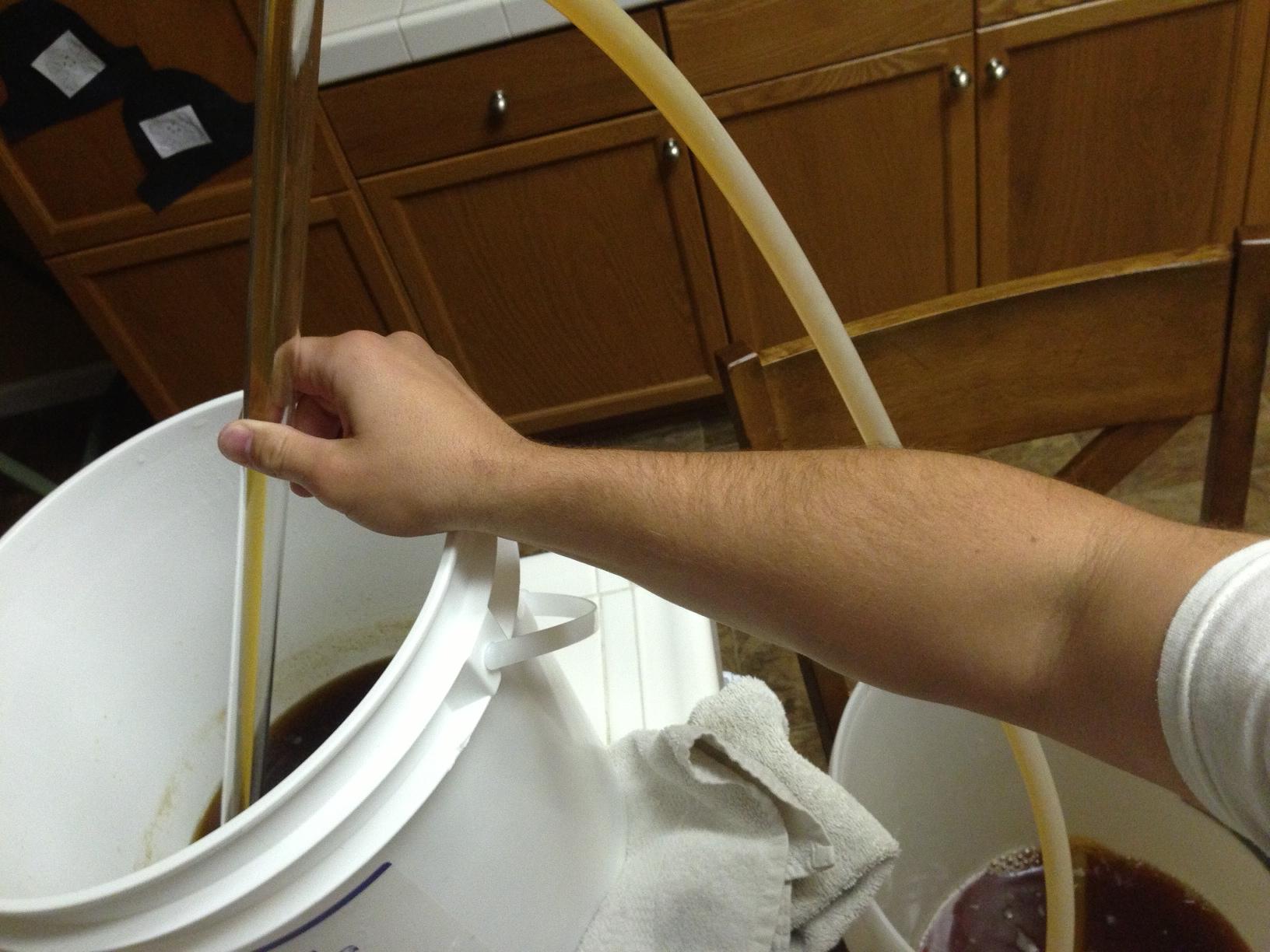
This was when I started to question my the greatness of my idea, as the beer had a pretty, umm, peculiar smell. I’m still not quite sure how to describe it, actually. It didn’t taste terribly good. Once all the beer was racked out of the fermenting bucket, a time when I usually expect to see a relatively creamy yeast cake, I noticed a green mess.
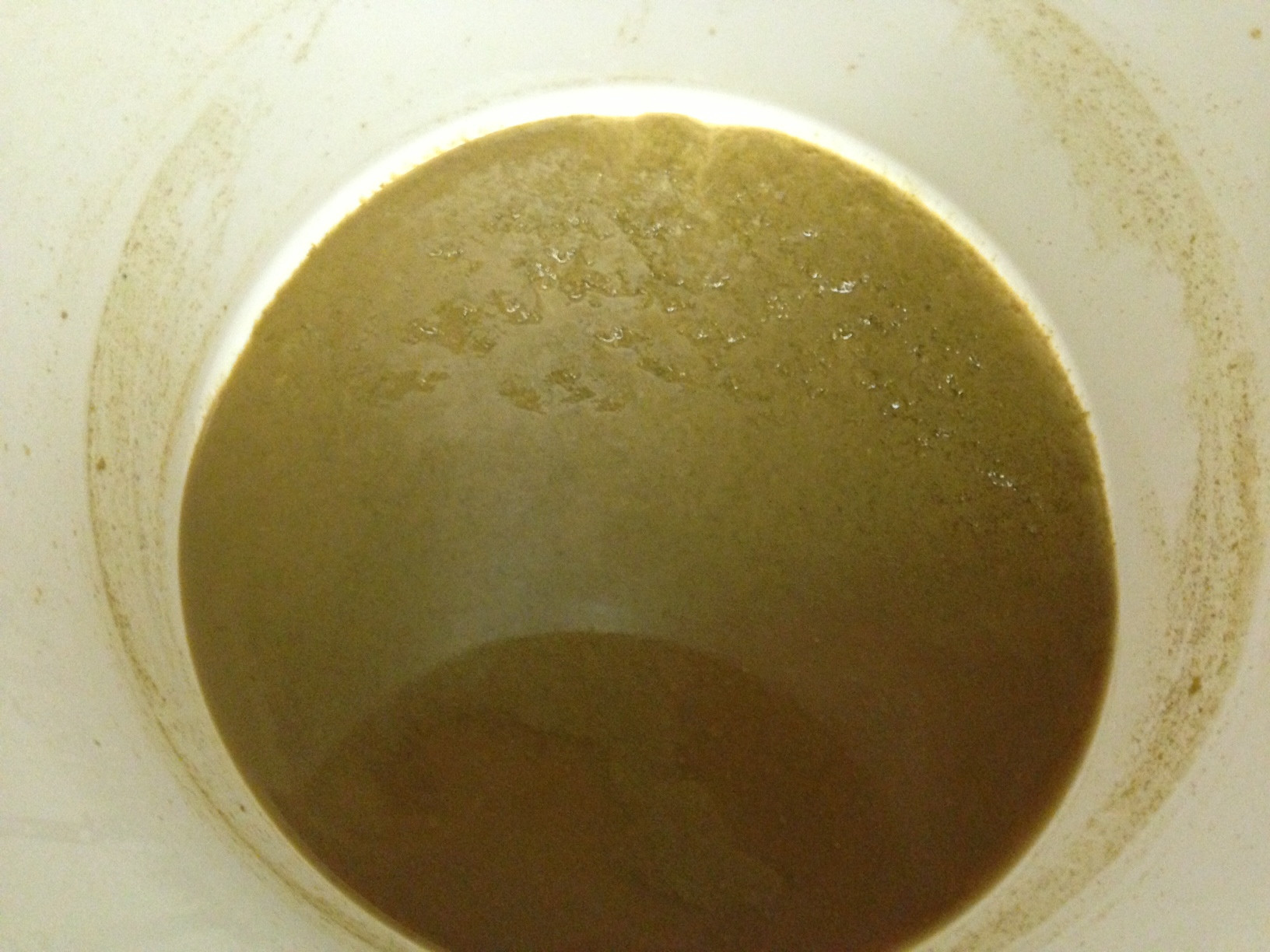
The leftover trub looked more like something you’d find plastered to the walls of a dive bar after BOGO Bud Light night rather than something that just made beer. And the smell… ugh. I bottled off a sixer of 12 oz bottles, each with a single carb drop, and left them to condition for 3 weeks.
Unfortunately, this is where the photos stop, but there’s good reason.
I tried the first beer with a buddy at exactly 3 weeks, I actually chilled it in the fridge for 2 days first. It opened up with that expected hiss and poured like good bottle conditioned beer does. Beautiful. The bad taste had sort of subsided, something I thought was more a result of how cold the bottle was, and the beer was very dry. Other than that, it sort of just tasted like a poorly made Red Ale.
I took another bottle to my homebrew club meeting the following week and had basically the same experience. No one enjoyed the beer, but neither was anyone terribly repulsed.
My plan was to take photos of a freshly poured glass the following weekend. With camera ready to shoot, standing in the middle of my kitchen, I popped the cap off of the 3rd of 6 bottles and got a fizzy, cold blast to the right cheek. The only gusher I’ve ever had a hand in making. I quickly rushed to the sink to save my counter and floors, forgetting to take any photos along the way. I then fearfully and very carefully took the last 3 bottles outside to open them over a drain, they all gushed with similar vigor.
Ultimately, I still consider this exBEERiment a success because I did make an alcoholic beverage that sort of resembled beer. I like to think that this beer may even have held its own in the days of cavemen, perhaps paring well with some mammoth steak and fresh nettle salad.
Not one to quit when I should, I’ve got another “wild” exBEERiment in the works that should be just about done, oh, soon…
Support Brülosophy In Style!
All designs are available in various colors and sizes on Amazon!
Follow Brülosophy on:
FACEBOOK | TWITTER | INSTAGRAM
| Read More |
18 Ideas to Help Simplify Your Brew Day
7 Considerations for Making Better Homebrew
List of completed exBEERiments
How-to: Harvest yeast from starters
How-to: Make a lager in less than a month
| Good Deals |
Brand New 5 gallon ball lock kegs discounted to $75 at Adventures in Homebrewing
ThermoWorks Super-Fast Pocket Thermometer On Sale for $19 – $10 discount
Sale and Clearance Items at MoreBeer.com
If you enjoy this stuff and feel compelled to support Brulosophy.com, please check out the Support Us page for details on how you can very easily do so. Thanks!











3 thoughts on “Oh, Baby, It’s a Wild Wort”
Wow that’s still pretty awesome that you were able to ferment using wild yeast. Can’t wait to see what else you’re working on.
It would be cool to make 2 gallons of wort and split it into two 1 gallons fermentors. One with the wild yeast, and one with a known yeast that would be along with the style of the beer. Then you’d have a great comparison.
Awesome work as always! I love reading about these exBEERiments!
Cheers.
I’m glad you liked it, thanks for reading! I’ve got plenty of exBEERiments coming up, so stay tuned… should be doing another tasting panel this weekend as well as brewing 2 more 😉
That’s pretty cool! My guess would be that you had a wild yeast in there that took it down to 1.010 quickly, but some other buggies kept on working, albeit at a much, much slower speed…